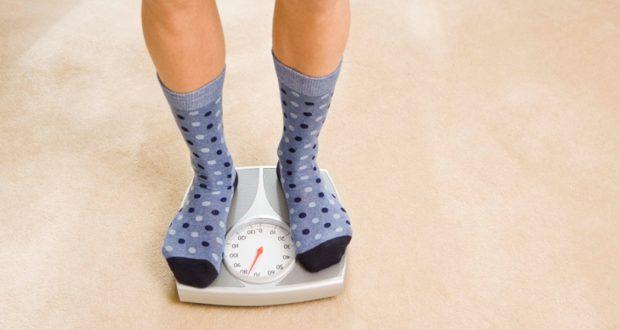Weight Loss Strategies
It seems like everyone wants to offer their advice when you are on a diet. Everyone, even people who are overweight, has tips for you. Many of these tips can help you on your path to lasting weight loss, but many will steer you in the wrong direction. The bottom line is that everyone is different and each person responds to weight-loss strategies differently. Although there’s no foolproof diet that works for everyone, strategies for success do exist.
Commit to Change
Acknowledge that losing weight and maintaining that loss requires lifetime dedication. Instead of focusing on a “diet,” cast a wider net. Imagine a lifestyle overhaul. When people focus solely on the goal of weight loss, they are often left without direction when that goal is achieved. By looking at the bigger picture and focusing on a healthy life and subsequently a healthy weight, you set the stage for lasting habits. Once you’ve made the commitment, you can develop an action plan and get started.
Set SMART Goals
Keep your goals SMART:
- Specific
- Measurable
- Achievable
- Realistic
- Trackable
This acronym, and similar versions of it, is frequently used in management, but is a great basis for weight-loss and fitness goals.
“Cut out all dairy, sugar, meat, and carbs” is neither a practical nor a reasonable goal, nor is “Drop two dress sizes in the next six months.” While the latter is more specific, it may not be a realistic goal. Vague goals don’t hold you accountable like specific ones do. Without specific numbers (i.e. 2 inches in two weeks), or very specific goals (to fit into my favorite jeans in six weeks), you can easily jeopardize your weight-loss strategy. You must be able to track your goals through measurements or a series of smaller goals. This ensures that you are making positive changes to get the results you want, and motivates you to keep going.
Being realistic helps ensure you aren’t setting yourself up for disappointment. Disappointment can lead to discouragement, which can send you back to old habits. Despite the double-digit weekly weight loss shown on reality TV competitions, the surest way to achieve safe, permanent weight loss is to shed 1 to 2 pounds per week. That means consuming 500 to 1,000 fewer calories than you expend per day.
Combat Portion Distortion
Portion sizes have exploded during the past few decades. An intriguing study published in the April 2010 issue of the International Journal of Obesity looked at the meals depicted in 52 of the best-known paintings of the Last Supper and found that in the past 1,000 years, the main courses grew by 69 percent, the plate size by 66 percent, and the bread size by 23 percent.
While indulging in oversized portions might be fun, it’s a surefire way to destroy weight loss and general health efforts. An easy way to keep serving size in mind is to compare food to everyday objects. For example, a proper serving size equals:
- one slice of whole-grain bread or pancake (the size of a CD case)
- 1/2 cup of cooked rice or pasta (the size of a cupcake wrapper)
- half a bagel (the size of a hockey puck)
- 1 cup of cold breakfast cereal (the size of a yogurt cup)
- 1/2 cup of cooked vegetables (the size of the bulb part of a light bulb)
- one small baked potato (the size of a computer mouse)
- one medium apple (the size of a baseball)
- 3 ounces of chicken breast, fish, or lean beef (the size of a deck of cards or the size of your palm, minus the fingers)
- 1 ounce of cheese (the size of a pair of dice or the size of your thumb, from tip to base)
- 2 tablespoons of nut butter (the size a whole walnut shell)
- 1 cup of yogurt or milk (the size of a standard yogurt cup)
Freshen Up Your Diet
Try not to view your new eating habits as restrictive. You can lower your calorie intake and still include tasty foods in your diet. Be adventurous and replace apples and bananas with more pomegranates and mangoes. Swap boring white rice for more exotic (and often even more nutritious) quinoa, amaranth, Israeli couscous, or chia seeds. Make lean ostrich or buffalo burgers instead of using artery-clogging ground beef. Trade your morning cereal for creamy no- or low-fat Greek yogurt mixed with honey, flaxseed, berries, and a little high-fiber cereal. You’ll pep up your taste buds and won’t feel deprived while adding nutritious powerhouses to your new diet.
Fill Up On Fiber
An American Journal of Clinical Nutrition study found fiber to be protective against weight gain. High-fiber foods take longer to digest, so you’ll feel full longer. Plus, many fruits and vegetables, which are typically high in fiber, contain water. This provides calorie-free volume. Fiber-rich foods that you should add to your snack and meals include:
- oatmeal
- whole-wheat pasta
- whole-wheat tortillas
- high-fiber cereals
- flaxseed
- apples
- pears
- prunes
Download to Drop Weight
Keeping a food diary is another proven tool in your weight loss arsenal. A study funded by the National Heart, Lung, and Blood Institute found that daily food recorders lost twice the weight as those who didn’t write down what they ate. Taking the time to jot down “tuna on pita bread with carrot sticks” or “mac and cheese” forces you to reflect on your choices. It also provides data for meetings with your nutritionist or trainer, who can easily identify patterns and areas in need of improvement.
If writing “caramel brownie” in a food diary encourages you to eat fewer calories, the same theory might apply to Facebook posts like “Michelle…enjoyed yogurt with blueberries for breakfast” or “Bridgette…is off to yoga.” It can be especially helpful if a group of friends commits to a change with an agreement to regularly post progress and send reaffirming comments.
Get Moving
Yes, you will lose weight by cutting calories. But committing to a daily workout will boost your burn and ramp up results. In addition to burning calories, you’ll slash your risk of certain medical conditions and lengthen your lifespan. One way to get and stay motivated is to buy a fitness tracker or pedometer. The widely accepted goal is 10,000 steps per day. People who meet that goal are more likely to net 30 minutes of moderate physical activity on most, if not all, days of the week. This can result in reduced blood pressure and increased weight loss.
Also, make certain you are combining cardiovascular exercise like running or biking with strength training and flexibility training. These three components are the basis of lasting physical health and can reduce cardiovascular disease, increase bone density, and improve flexibility while reducing aches and pains.
Seek Support
Whether it’s your spouse, a coworker, an online support group, a healthcare professional, or a trainer, make sure you have someone who will hold you accountable. It should be someone who will listen to you when you’re frustrated or tired, and cheer you on.
According to the Journal of Consulting and Clinical Psychology, people who are on a weight-loss journey with friends or family members are not only more likely to lose the weight they intend to, they are also more likely to keep it off.
Identify Your Roadblocks
Be honest with yourself, and identify potential sticky situations before they arise. Then make a plan for dealing with them when they do. If you’re a parent of a toddler and often find yourself finishing their leftover noodles and chicken nuggets, pop a piece of mint gum while they’re eating to stop mindless nibbling. Chocoholics can prepare for cravings by storing individually wrapped, bite-size pieces in the freezer. When the longing for fudge hits, unwrap and eat one piece at a time. That way, you’ll have to wait for each serving.
One of the most frequent obstacles for people is lack of convenience. Making healthy meals ahead of time and having fresh fruits and vegetables cut up and in the refrigerator can make wise snacks just as readily available as processed, unhealthy snacks.
Push Past Plateaus
Weight-loss plateaus can happen to even the most dedicated dieter. A plateau occurs when your metabolism changes as it grows accustomed to the lifestyle changes you have made. After a few months of continuous weight loss, you may find your progress stalled despite still dieting and working out. This can be incredibly frustrating.
To break through, you’ll need to decrease caloric intake even further and increase activity to start shedding pounds again. Try cutting 200 calories from your daily meal plan (as long as this doesn’t put you below 1,200 calories total). Bump up your workout time by 15 or 30 minutes, or ramp up the intensity. Incorporate some more walking throughout the day by getting off public transportation one stop early or walking instead of driving to the grocery store for a few odds and ends. Plateaus happen to everyone. You can and will move past them to reach your goal weight.
Losing weight and attaining better health is a learning process, and it’s one that doesn’t come overnight. Steadfast commitment to change will allow you to adopt the healthy habits that will help you achieve your goals and maintain a healthy weight for life.
- DON'T MISS
- How green tea can help you beat cravings and lose weight
- What exercises can I do in the gym for weight loss? (Fitness query of the day)
- How to lose weight in your 40s?
- Losing 18 kgs was easy for Niharika and YOU can do it too!
- Do the quick-fix weight loss products, treatments and services really work?
- Why fad diets are not a healthy weight loss option
- Avoid late night cravings to stick to your weight loss diet
- Honey: Categories, types and benefits
- Almond milk — Best milk for weight loss
- Vinyasa flow — the ultimate yoga asana for weight loss




